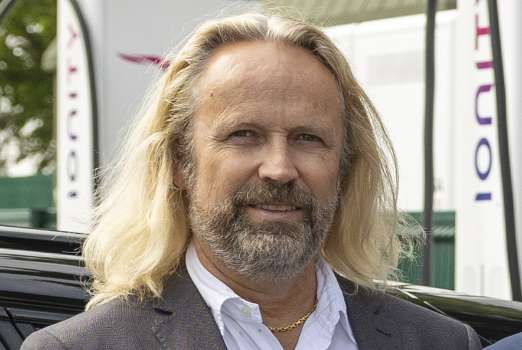From Oslo to Marbella in an electric car – a charging experience
Is it possible to go on a long-distance road trip through Europe in an electric vehicle? Will It be hassle-free? Jan Haugen Ihle, Regional Head of North & West Europe at IONITY took his Audi e-tron 50 and our high-power charging network to the test. Read about his journey here.
It was time to put my money where my mouth was. That is, in the form of testing my claim that going on a road trip through Europe in an electric car is hassle-free. The aim was to drive from Oslo to the coast of Spain in my Audi e-tron 50, only using the IONITY high-power charging network.


The first stage went from Oslo to Gothenburg, where I was charging at Strömstad and then in Spekeröd near Stenungsund. The breaks were filled with a few cups of coffee and an update of the journey for my followers on social media.

The second day started in Kiel, Germany, where I drove about thirty kilometres to Aalbek West. While I was enjoying my morning coffee the car got its electric top-up. The journey continued to Belgium, with a total of four charging stops due to the car's rather limited range. I always charge the car when the battery shows approx. 20 percent and stop charging when nearing 80 percent. That way I maintain the car’s battery health and it also saves me a lot of time. During this stretch the charging usually began at 123kW, and continued over 100kW all the way to 80 percent, which gave me just enough time to visit the toilet and purchase something to drink.

The third day I spent north of Paris as IONITY was opening its 100th station in France. After a successful event, I drove through Paris in the late evening to avoid rush hour. Shortly before I parked the car at the hotel, I decided to charge it again, while the battery was still warm, which also saves a lot of charging time – as opposed to charging a cold battery in the morning.
The journey continued and on day four I drove from Paris to San Sebastian, Spain. So far so good. But the last part of the journey from San Sebastian, via Madrid, to Marbella was less smooth.

In Spain, unfortunately, there are some stretches that can be challenging when it comes to charging. Which, among other things, is due to bureaucratic processes around approvals and energy grid access. For example, in some areas a charging speed of 23 kW can hardly be exceeded. That feels extremely slow when you are used to 100kW and more. Close to Cordoba, I already drove 190 kilometres since my last charging session and the GPS told me I still had about 200 kilometres to go. Unfortunately, there was no IONITY charging site available. The solution was therefore another supplier. Which turned out to be rather complicated. For the first time on the trip, I felt what you could call range anxiety. After much searching, trial and error, and some detours, I finally found a 50-kilowatt charger that worked. The whole operation cost me nearly two hours. In the near future this will however be a thing of the past. As soon as we have grid access and our location in Marmolejo will be open, EV drivers can easily drive all the way to Marbella only using IONITY chargers.
Although my claim was partially disproved in Spain, I must say that the trip went very well. Going on a long-distance journey with an EV is possible without worrying about being stranded on the side of the road with flat batteries.
Here are my tips for hassle-free trips
- Make sure to update your car's software to improve the overall charging performance of your car.
- Plan your route in advance and – if possible – charge at less busy times. Early in the morning or late in the evening are best and ideally during the week rather than at weekends.
- Download the IONITY app to see in real-time how many chargers are available.
- Bring a charging cable for destination charging or emergencies.
- Start with a full battery. This way, after an initial long drive, the battery will be warm when you arrive at the charging location, and the charging will go faster.
- The lower your battery level, the faster your EV will recharge. Try to arrive at the charging stations with a State of Charge (SOC) below 20 % if your route allows you to.
- Stop charging at 80 %. Charging from 80 to 100 % can take the same amount of time as charging from 20 to 80 %. So, unless it is mandatory for your trip, top-up to 80 % and go.
The IONITY fast charging network spans over 24 European countries with already more than 1,700 charging stations and supplies electric vehicles exclusively with 100 % renewable energy. We will soon provide drivers of electric cars high-power charging stations every 150-200 km along European motorways and main roads. Each station will be equipped with a minimum of four charging points and our network is growing daily. By 2025, we will have installed nearly 7,000 charging points across Europe to enable electric travel for everyone. So, wherever we currently have no stations, we are working on opening new ones soon.

